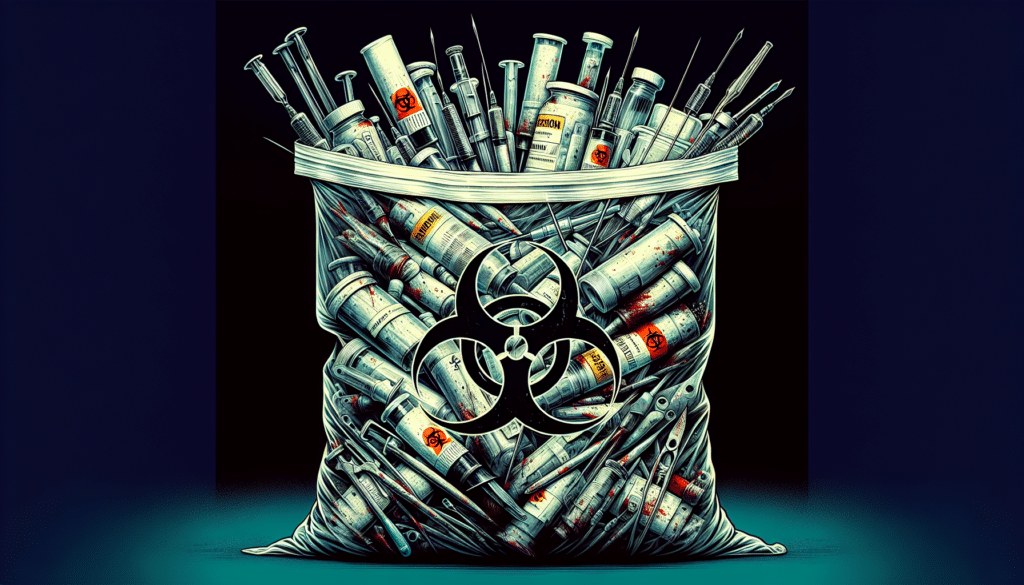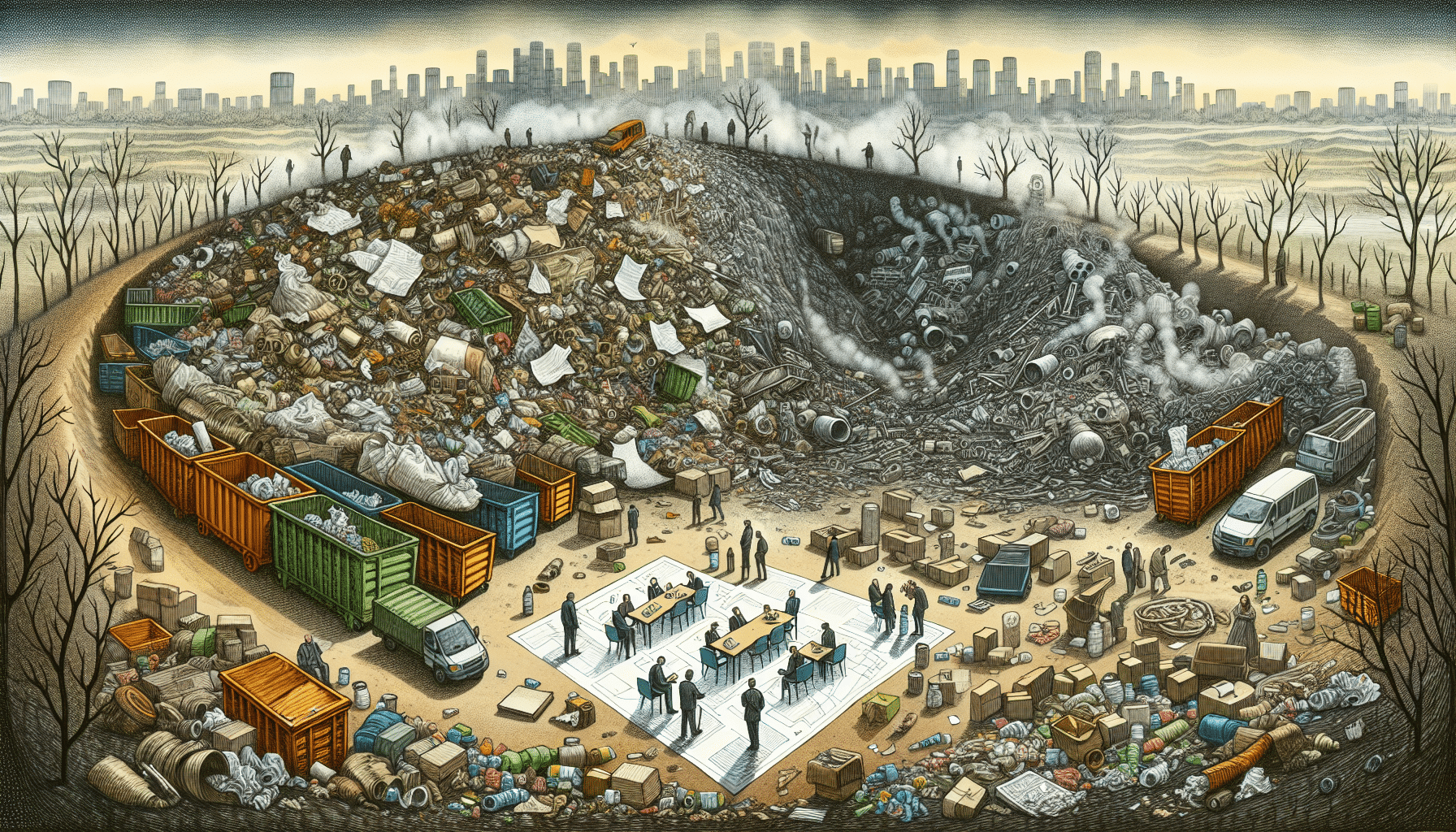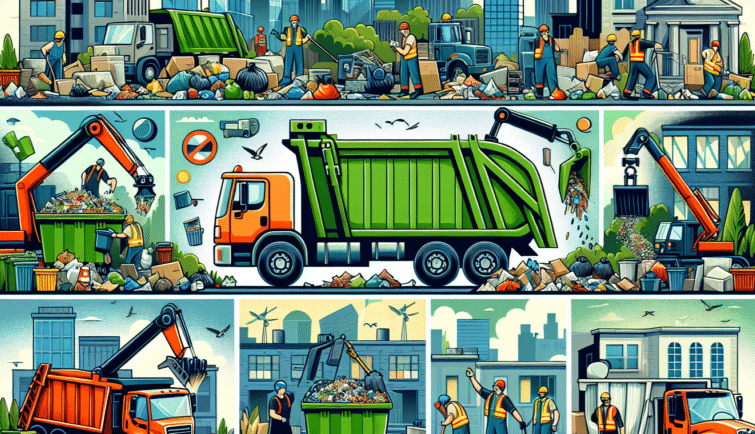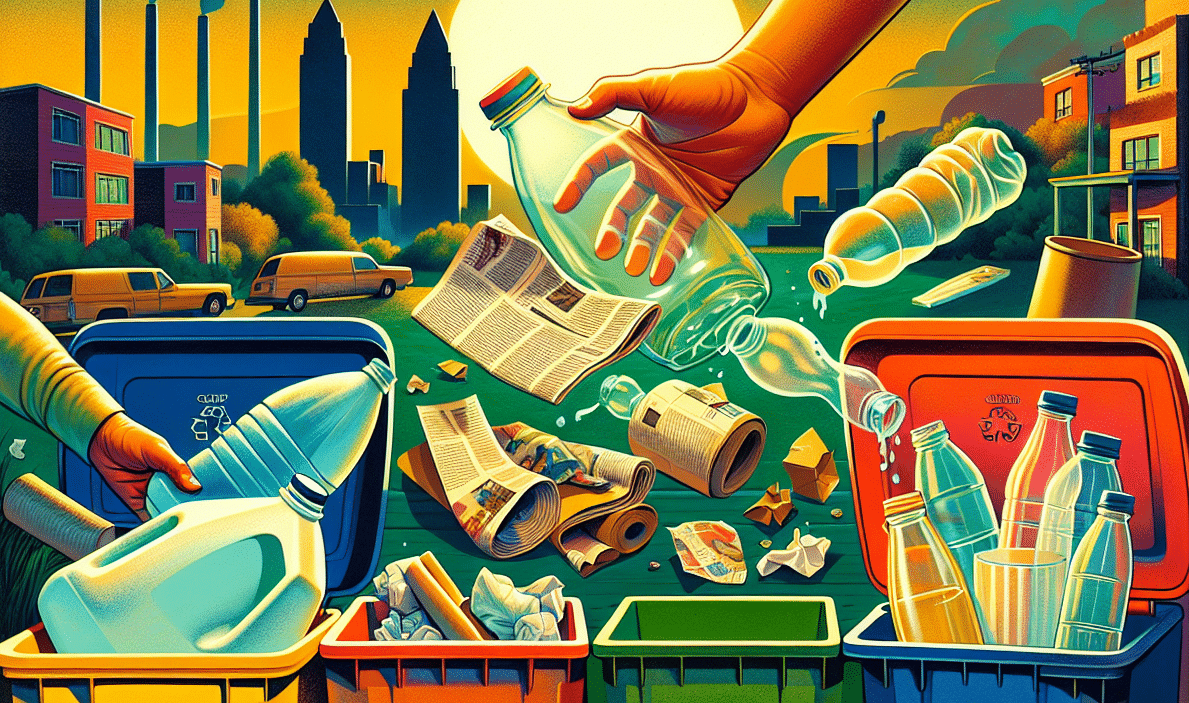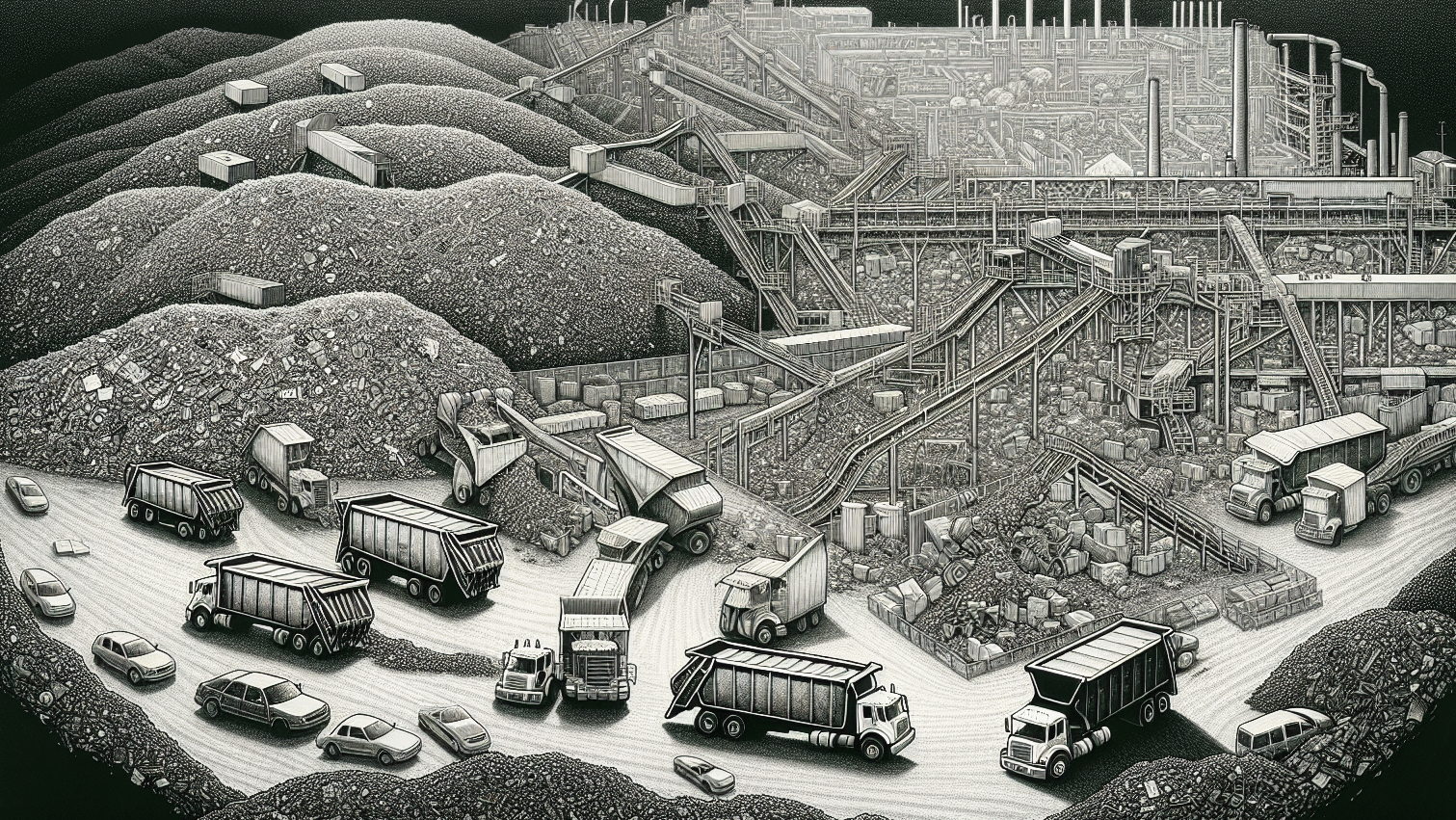Essential Tips for Disposing of Biohazard Bags Safely and Effectively
Are you ensuring the safe, regulated disposal of biohazard bags? This article eliminates the guesswork, detailing the vital procedures and regulations for disposing of biohazard bags efficiently and effectively. With this guide, protect your staff, community, and environment from the hazards of improper waste management.
Key Takeaways
- Biohazard bags are crucial in medical waste management to contain and prevent the spread of infectious waste, requiring stringent selection, usage, and transport standards, including compliance with OSHA-required markings and safety tests.
- The disposal process of biohazard bags involves meticulous protocols from sealing to sterilization or incineration at specialized facilities, ensuring the complete neutralization of hazardous materials following guidelines by entities like the CDC and WHO.
- Effective biohazard waste management practices include properly segregating infectious and non-infectious waste and awareness of prohibited materials in containers. This leads to significant cost savings, compliance with regulations, and reduced environmental impact.
The Critical Role of Biohazard Bags in Medical Waste Management
Biohazard bags play a pivotal role in medical waste management, acting as silent guardians that contain residual substances from healing and research, including body parts, to prevent the spread of pathogens. Whether it’s a laboratory on the cusp of a breakthrough or a hospital ward teeming with life’s fragile balance, these bags are critical in precisely managing biological waste. Their selection and use are not just a matter of following protocols; it’s about creating a bulwark against the invisible threats that thrive in medical waste.
Segregating infectious waste at its genesis is not just good practice; it’s a strategic maneuver in the war against disease transmission. Hospitals use biohazard bags to swiftly quarantine hazardous waste, halting the spread of infectious agents and safeguarding the environment and public health.
Identifying Appropriate Biohazard Bag Usage
When it comes to biological waste, not all bags are created equal. The red bag, a beacon in waste disposal, is not merely a container but a statement of purpose. Biohazard bags are the first line of defense in waste disposal, explicitly designed for sharps waste, human blood, human tissue, and other materials teeming with potential pathogens. Employing puncture-resistant and leak-proof bags is a mandatory safety measure, particularly when handling sharp objects like broken glass that could pierce and spill hazardous contents.
The journey of these bags is one of utmost responsibility. Transporters of infectious waste are the unsung heroes who must handle these items carefully, ensuring that every sharp, every contaminated piece of equipment is safely managed to minimize the risk of injury and contamination during transport. It’s a delicate balance executed precisely for the greater good.
Standards for Biohazard Bags
Biohazard bags are subject to stringent standards. They bear more than just waste – these bags carry a code, a biohazard symbol, and a warning in four languages, serving as a testament to the OSHA-required markings that set the rules for handling hazardous waste. The bags, such as those made by Spartech, are champions tested in the crucible of durability. They emerge victorious, surpassing the 480-gram tear test and the dart drop test, setting a benchmark for reliability in biohazardous waste.
These standards are not just for show; they are the pillars of containment for biological waste, a set of commandments inscribed in regulations. This statute, NR 526.10(3), is part of the Wisconsin administrative code. It likely pertains to a specific regulation within the state. Adm. Code. These codes dictate the segregation of waste, the safety practices to be upheld, and the compliance that ensures the well-being of all.
The Disposal Process of Biohazard Bags
Disposing of a biohazard bag is a process governed by a series of protocols followed with precision. It’s a journey that begins with a seal, an assurance of containment and ends with the placement of the bag into the sanctity of a designated container—a biobox lined with the double security of two red bags. The importance of this protocol cannot be overstated; it is the cornerstone of protecting public health and preserving the environment.
The process is meticulous, and the stakes are high. Each step, from sealing to disposing, is governed by a specific sequence of actions that ensure safety and compliance with the myriad of regulations governing infectious waste disposal. It’s a ritual of disposal that demands respect and adherence, for the well-being of all hangs in the balance.
From Facility to Final Destruction
The journey of a biohazard bag from a medical facility to its final destruction demonstrates the effectiveness of our waste management systems. Spartech’s biohazard autoclavable red bags, compliant with Federal DOT Regulation 49 CFR 173.197, ensure that the transport and handling of hazardous material are nothing short of secure. These bags, often double-bagged for an extra layer of defense, embark on a journey to specialized off-site facilities, where they will be treated with the gravity they deserve.
At these facilities, the bags undergo sterilization or incineration—rituals of purification that neutralize the hazardous materials within. Solid infectious waste finds its way into a sealed bio box, the burn box, and is subjected to the cleansing flames of incineration, a process that leaves no trace of the dangers once contained. It is a cycle of transformation, from potential peril to harmless ash, carried out with the highest safety standards at a sanitary landfill.
Treatment Methods for Biohazardous Waste

Steam sterilization is a favored method in waste treatment, transforming specific biohazardous waste into harmless substances. The autoclave, a chamber of high-pressure steam, is the crucible in which this transformation occurs. Resilient to the steam’s scouring heat, Autoclave bags ensure that medical instruments emerge sterile and safe for subsequent use.
Yet, sterilization is but one path in the waste treatment odyssey. Incineration, a method akin to sterilization, subjects biohazard bags to the purifying flames, a practice governed by regulations that demand special handling to meet safety and compliance standards. Whether by steam or fire, the treatment of biohazardous waste is a process that requires diligence and adherence to the rules that keep us safe.
Prohibited Materials in Biohazard Waste Containers
Biohazard waste containers, designed to hold biohazardous materials securely, must be kept free from prohibited items that could undermine their effectiveness. The laws of waste disposal are clear: no chemicals, no radioactive fluids, no non-biohazardous waste. These forbidden fruits must never enter the realm of the red biohazard bag, for they can cause the very containers designed to protect us from breaking and leaking.
It is a matter of discipline to know the limits of the red biohazard bags, which are ill-suited for alcohol, chemicals, and other materials outside their purview, including body fluids. Conversely, the yellow biohazard bags are a different breed, designed to dispose of chemicals, infectious clinical materials, and pharmaceutical medicines—a distinction underscores the importance of color-coded disposal systems.
Ensuring Compliance with Biohazard Bag Regulations

Compliance in biohazard waste management is achieved by following standards established by global entities such as the CDC, EU, and World Health Organization. It’s a path that also winds through the state health and safety codes, ensuring that a unified safety vision governs decontamination. The regulations are as diverse as they are specific, with states like Wisconsin setting licensing requirements for transporting infectious waste—a mosaic of rules that paint a picture of rigorous oversight.
The alliance with regulated medical waste disposal providers is a pact that fortifies the management of biohazard waste, ensuring that every step, disposal, and seal complies with the laws and regulations that serve as the guardians of public health.
Training and Education
The art of managing hazardous waste is not inherent—it is a skill honed through rigorous training and education. Those who don the gloves and face the biohazard bags must be adept, versed in adequately handling these vessels of risk, and aware of the protocols that govern their emergency response. The training ground for these skills varies, from the classic classroom setting to the modern convenience of interactive online courses or the hands-on approach of on-the-job training.
This education aims not just to impart knowledge but to embed a culture of safety that extends to the very act of segregation. Mixing regular trash with medical waste invites disaster, not to mention the additional costs and regulatory infractions that such a misstep can incur. Separating waste is not just a task; it’s a fundamental component of compliance—a lesson in economics and responsibility.
Record Keeping and Documentation
The annals of biohazard waste management are incomplete without the meticulous records that chronicle every quantity of waste generated, treated on-site, or sent off-site. These records are the bedrock of regulatory compliance, the evidence that underpins the audits and verifications that ensure adherence to standards. Retaining these documents for a minimum of three years is not optional; it is a mandate supporting the integrity of the waste disposal process.
The documentation of training, too, is a pillar of compliance. It includes a written description of the training provided and a completion record that serves as a testament to the facility’s commitment to safety and a shield against regulatory scrutiny. Safeguarded in a secure location, these records must be accessible at a moment’s notice, ready to stand as a testament to the facility’s diligence in the face of audits and verifications.
Selecting the Right Biohazard Bag for Your Needs
Choosing the right biohazard bag requires thoughtful consideration of factors such as:
- Size
- Color
- Material
- Closure features
Ensuring effective containment and handling. It’s a choice that cannot be made lightly, for the sanctity of biohazardous waste disposal rests on selecting the bag that best suits the needs of the facility and the type of waste it generates.
Size and Color Considerations
The size of a biohazard bag is a matter of logistics, a calculation that must accommodate the volume of waste generated with efficiency and foresight. From the modest three-gallon bag to the cavernous seventy-gallon sack, the size spectrum of biohazard bags is as varied as the facilities that use them. Color, too, plays a critical role in the narrative of waste management. The red biohazard bag is not just a container; it’s a signal, a beacon that clearly guides the sorting and handling of hazardous materials.
The color-coding of biohazard bags is a language of safety, a palette that communicates the necessary precautions and disposal methods associated with the waste they contain. In this spectrum of reds and yellows, every hue is a directive, a guidepost in the waste journey from generation to disposal.
Material and Closure Features
The fabric of a biohazard bag is its strength, woven from materials like polyethylene that form a waterproof barrier against leaks and breaches. Autoclave bags, forged from the resilient polymers of high-density polyethylene (HDPE) and low-density polyethylene (LDPE), are designed to withstand the rigorous temperatures of up to 141 degrees Celsius, ensuring that they maintain their integrity in the face of sterilization’s heat.
The closure of a biohazard bag is the final seal of security, a feature that ensures the containment of hazardous contents and the protection of the surrounding environment. Whether it’s a zip-lock seal’s simplicity or an adhesive strip’s assurance, these closure methods are the last line of defense against unwanted exposure to the dangers within.
Cost-Effective Strategies for Biohazard Waste Management
In the cost-conscious healthcare sector, biohazard waste management offers significant opportunities for savings. By embracing waste reduction programs and properly segregating infectious and non-infectious waste, facilities can utilize less expensive disposal methods for the latter. This strategy leads to significant financial reprieve. The benefits of proper biohazard waste management include:
- Reduction in disposal costs
- Compliance with regulations and standards
- Minimization of environmental impact
- Protection of public health and safety
The separation of medical waste from regular trash, an exercise in precision based on weight, can also contribute to reducing disposal costs, with fees often pegged to the heft of the waste.
A flexible pricing model that adapts to the volume of waste generated allows healthcare facilities the freedom to pay only for the disposal services they use. This system reflects the actual waste profile of the facility. Using larger storage bins can also reduce the frequency of waste pickups, thereby decreasing the total charges incurred for these services. It’s a game of numbers, a balancing act that requires a keen understanding of the costs involved, including the additional fees levied by waste disposal providers that often go unnoticed.
Summary
As the curtain falls on our exploration of biohazard waste management, we are left with a tapestry of knowledge woven from the threads of safety, compliance, and efficiency. The role of biohazard bags in this narrative cannot be overstated; they are the sentinels that stand guard over our health and the environment, containing the potential threats of infectious waste with unwavering diligence. By adhering to the disposal protocols, selecting the appropriate bags, and ensuring proper treatment methods, we uphold the highest standards of medical waste management.
Let this be a call to action, an invitation to implement the essential tips shared within these pages. By embracing cost-effective strategies, investing in training and education, and maintaining meticulous records, healthcare facilities can confidently navigate the complexities of biohazard waste management. Through these practices, we can all contribute to a safer, healthier world.
Frequently Asked Questions
What is considered biohazardous waste, and why is it important to dispose of it correctly?
Disposing of biohazardous waste correctly is essential because it includes potentially infectious materials like human blood and body fluids and can spread diseases if not handled properly. Proper disposal is crucial to protect public health and the environment.
Are there different types of biohazard bags for other kinds of waste?
Yes, different types of biohazard bags are designed for specific types of waste. For example, red bags are used for sharps waste and infectious materials, while yellow bags are used for chemical and pharmaceutical waste.
What are the standards that biohazard bags must meet?
Biohazard bags must meet specific durability standards, such as the 480-gram tear test and the dart drop test. To ensure proper handling, they must be labeled with the OSHA-required biohazard symbol and warnings in four languages.
Why is training and education necessary for those handling biohazardous waste?
Training and education are important for those handling biohazardous waste because they ensure personnel are competent in proper handling, understand emergency procedures, and can maintain regulatory compliance to prevent contamination.
How can healthcare facilities cost-effectively manage biohazard waste?
Healthcare facilities can manage biohazard waste cost-effectively by implementing waste reduction programs, segregating infectious from non-infectious waste, and using larger storage bins to reduce waste pickup frequency. This helps in reducing the overall cost of waste management.
